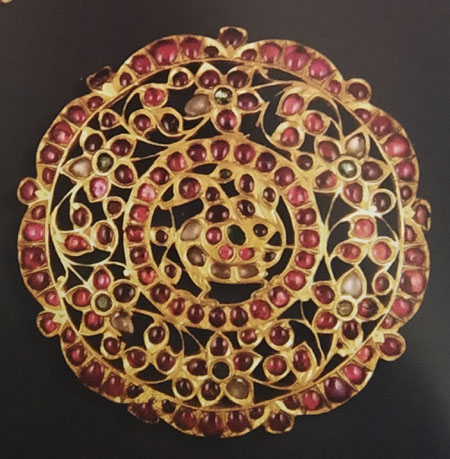The origin of Parsi embroidery can be traced back to the time when immigrant Persian traders traveled to China from India. The Persians admired the textile embroidered with fine silks of China and their oriental patterns. They brought it to India and presented it to their women. To emulate the oriental finish and motif, Parsi women made use of single-thread silk yarn to embroider motifs. Parsi embroidery is typically done with white pure silk on a dark base such as black, violet, red or dark green. Motifs depict the culture’s closeness with nature. Motifs of birds are also inherited from Chinese mythology. The commonly found motifs are the ‘Chinaman’ and woman, birds and a lot of flora and fauna – signifying fertility and good omen. Other transformed motifs such as kaanda–pepta/ onion and potatoes and chakla–chakli/ male and female sparrows are also depicted. Parsi embroidery is done on various garments like suits, tops and skirts. Parsi Gara or Parsi sari is an amalgamation of European designs and Gujarati mocha stitch made with silk. This embroidery is also used to beautify jambala, torans and chalk boxes.
Gallery
YOUR VIEWS
PRACTITIONERS: INDIA
Access 70,000+ practitioners in 2500+ crafts across India.
BIBLIOGRAPHY
10,000+ listings on arts, crafts, design, heritage, culture etc.
GLOSSARY
Rich and often unfamiliar vocabulary of crafts and textiles.
SHOP at India InCH
Needs to be written.






